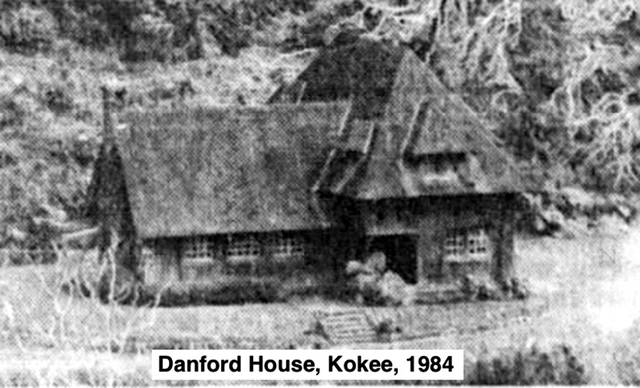In February 1917, William Hardy, the territorial hydrographic official on Kauai, reported that the temperature at Kokee during the latter part of January had plummeted to a freezing 32 degrees — an account that authoritatively confirmed a claim that had been made earlier by hydrographer George K. Larrison, which stated that the Kokee District did, indeed, experience freezing weather in winter.
In February 1917, William Hardy, the territorial hydrographic official on Kauai, reported that the temperature at Kokee during the latter part of January had plummeted to a freezing 32 degrees — an account that authoritatively confirmed a claim that had been made earlier by hydrographer George K. Larrison, which stated that the Kokee District did, indeed, experience freezing weather in winter.
Another spell of freezing weather occurred at Kokee during the week of Feb. 3, 1929, which resulted in many flowers and shrubs in the region being killed off by the cold.
That very same day, the outdoor thermometer near the Kokee cabin of Philip L. Rice fell to a low of 27 degrees, and a temperature of 31 degrees was registered within the cabin of H. D. Sloggett.
About two years later, on Tuesday morning, Jan. 26, 1931, a below-freezing temperature of 27 degrees was felt again at Kokee, and all of Kauai experienced a cold snap during that week. At Lihue, for example, a reading of 52 degrees was made.
Freezing temperatures at Kokee were also reached during the first week of February 1941. The thermometer measured 26 degrees at the home of Mrs. William Danford — the coldest recorded temperature in the history of Kauai — and 28 degrees at Philip L. Rice’s home.
Later that week, one old kamaaina recalled that the winter of 1914, with its low temperatures, cold winds and little rain, was similar to the winter of 1940-1941.
On Feb. 21, 1960, Joseph Souza, the head of the ranger station at Kokee, said the temperature had dropped to a frigid 30 degrees that day, and a weather forecaster pointed out that cold, dry air blowing in from the north was responsible.
Up in Kokee on Dec. 9, 1973, it got down to 32 degrees according to an announcement of the 150thAircraft Control and Warning Squadron of the Hawaii Air National Guard.
Also, an unofficial low of 29 degrees was recorded at Kanaloahuluhulu Meadow in Kokee in February 1986.
•••
Hank Soboleski has been a resident of Kauai since the 1960s. Hank’s love of the island and its history has inspired him, in conjunction with The Garden Island Newspaper, to share the island’s history weekly. The collection of these articles can be found here: https://bit.ly/2IfbxL9 and here https://bit.ly/2STw9gi Hank can be reached at hssgms@gmail.com.






I woke up in Waipouli one morning in the 90s and the outside mercury thermometer read 48 degrees F.
1914, 1941, 1940-45 has a common factor that massive wars occurred and that especially in the 1800-1900 when the Spanish Christians embarked on their religious extermination campaign in Latin America as well as the Whites in North America killing off about 60 million native Indians resulting in agriculture lands laying fallow while native forests took over reducing the carbon output resulting in mini winters throughout the globe.
It is not some common fluke of nature, but mankind interference in nature that cause these fluctuations and now because of overpopulation and over demand of resources including petrol based carbon outputs the opposite is occurring that is global warming and increased storms.